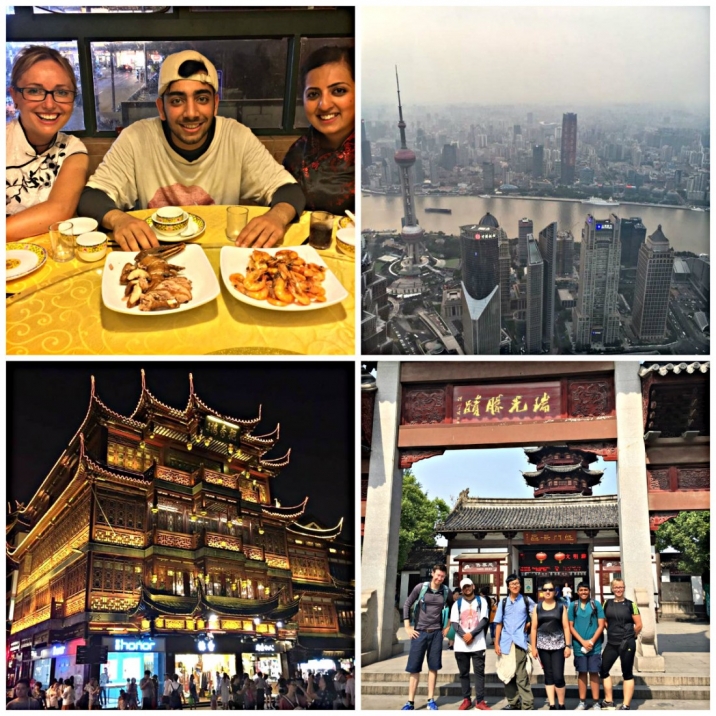First Stop Beijing
Departing Heathrow in the early afternoon of July 1st, with parents looking on with glee (or perhaps worrying a little) at the prospect of almost an entire month without their children, the College's first overseas expedition got underway.
Travelling to Beijing, via Dubai, and after making our way through immigration checks with some hard-earned visas, we had arrived in a city of 22 million people, the most populous city in the world according to the UN, with an extraordinary six ring roads, 91 universities and over 3000 years of history.
Some students were able to soak up the sights and sounds of the city on our coach on the way to our hotel from the airport. Others simply slept, having endured such a long journey to get here.
We checked into our hotel, and then quickly got back out to enjoy our first taste of Chinese cuisine - an extraordinary welcome dinner of Peking duck, roasted traditionally over wood from fruit trees. Jerry, our guide, explained rules and responsibilities for our trip, and then the group each shared stories from their past to break the ice, before tucking in to some tremendous food. Tomorrow would be an early start.
Cultural landmarks like Tiananmen Square, the biggest public space in the world, and the Forbidden City, home to Ming and Qing dynasties, were visited, sandwiched between an enlightening trip down Wangfujing snack street. Here we were astounded to see an array of critters deep fried and ready to nibble on for a small fee, with locusts, spiders, snakes and wriggling scorpions particularly eye-catching. Gladly none of the students could quite muster the fortitude to lunch on these. Instead, a bowl of rice with slow cooked pork and kimchee provided a more orthodox meal.
In the evening, we experienced one of Beijing's oldest art forms, an opera, told in three separate parts, describing the travails of a young woman trying to attain the services of a boat man to try to catch up with a potential concubine, some impressive ribbon work from another young lady in a mesmerising dance, and finally, the climax, which saw a distraught emperor, having lost a battle, and then having to witness the suicide of his wife. Cheery stuff for the end of the first full day in China, but the students were settling in well.
They had also learned some useful new words - Nihao (Hello) - ShiShi (Thanks) - Shuai Ger (Hot Boy) and Meanu (Hot Girl). It is safe to say that the students had enjoyed their first couple of days in China.
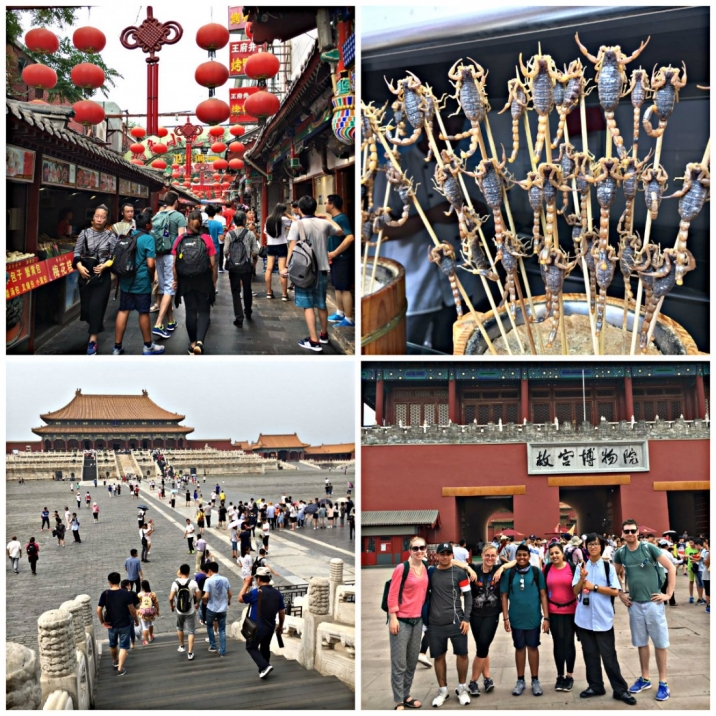
Climbing the Great Wall
After getting up early and checking out of our first hotel, the group encountered their first rain of the trip - and quite a lot of it too - on our private coach from Beijing to the 'wild' Great Wall at Gubeikou. By the time we reached the village, which stands at what was an intersection of the wall, the rain had cleared and we were now welcomed by some beautiful sunshine.
There are many parts of the Great Wall which can be climbed, depending on their abilities and tastes. From the very commercial and well restored part at Badaling, populated by hawkers who will try to sell you anything they can and featuring cable cars to help as many people as possible to see this incredible landmark, to the more rugged and natural parts at sections like Gubeikou, which give a better idea of how the wall would have been when it was thriving, acting as the main barrier to keep the Mongol hordes out to the north. Either way, Chairman Mao, the vilified first leader of the Communist People's Republic of China said "He who has not walked the Great Wall is not a true man", and so it was time for the boys on the trip to reach full maturity.
After hiking up a narrow path to an opening, we got our first glimpses of the wall itself. Some parts of this stretch were over 1,500 years old, and it showed, with ruined keeps and large chunks missing from this famous barrier. All in all, the students hiked over 8 km before making our way back to our guesthouse to enjoy an incredible meal of dumplings, made by our own fair hands.
With the intention of seeing more of the wall, and after bidding a find farewell to our hosts, we headed for Mutianyu, a more developed part of the wall, closer to Beijing. Unfortunately, a second opportunity to walk the wall did not materialise as a nearby thunder storm made the open nature of the structure unsafe. Instead, we headed to the Summer Palace in Beijing to inspect the seasonal getaway of the Ming and Qing emperors. For the first time on the trip, our surroundings felt truly busy, with many Chinese tourists enjoying the lake and parkland.
Renting pedal boats to explore the lake turned into a race between the two vessels, hopefully building stamina for the hiking and cycling to come in the trip. A quick shower and change, then a noodle dinner, prepared the group for what would be the first overnight train journey of the expedition. We were heading for Xi'an, where the Terracotta Warriors lay in wait.
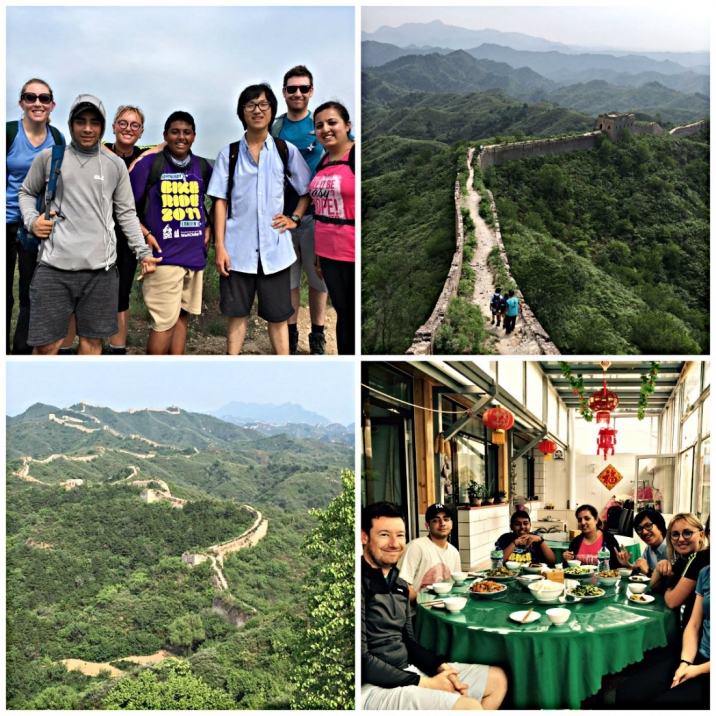
Exploring the History and Culture of Xi'an
Arriving early in Xian following the overnight train from Beijing, we were confronted by torrential rain. Ducking and weaving past the crowds around the busy train station, we made it quickly to our minibus, which promptly took us on to our hotel.
A brief shower and change, then a Chinese breakfast in, of all places, McDonalds, gave us some sustenance for our long awaited trip to see the Terracotta Army, a huge army of life size, handcrafted figures made to guard the tomb of Qin Shi Huang, the first emperor of China, around 210 BC. The craftsmanship which went into their creation was incredible, with no two soldiers the same. What also astounded the group was the huge number of visitors who had come to see the mausoleum, and the level of development surrounding it, with fast food restaurants and several street sellers jostling for custom.
Coming back into Xi'an, we visited the bustling Muslim Quarter, where it seemed that everything was for sale. From foot massages and small toys to the seemingly omnipresent meat on a stick. This was the China that many of the students expected - constantly moving, crowded and irrepressible.
The following morning, we were able to lower the tempo by first having a class of T'ai Chi outside the main stadium in Xi'an. An ancient art form, performed by millions of Chinese people on a daily basis, sometimes with various props like fans or swords. The calm and gentle movement helped us to contemplate what had been a hectic few days. We were able to continue this by visiting the Wild Goose Pagoda. Built in 652, it houses many of the original scrolls brought from India to encourage the study of Buddhism in China. We were given a brief class on Chinese calligraphy and some information about how being born in a certain year brings out characteristics in us all.
A quick dash back to the train station, and on to our second overnight train, this time to Chengdu, in Sichuan Province, would be our next stop.
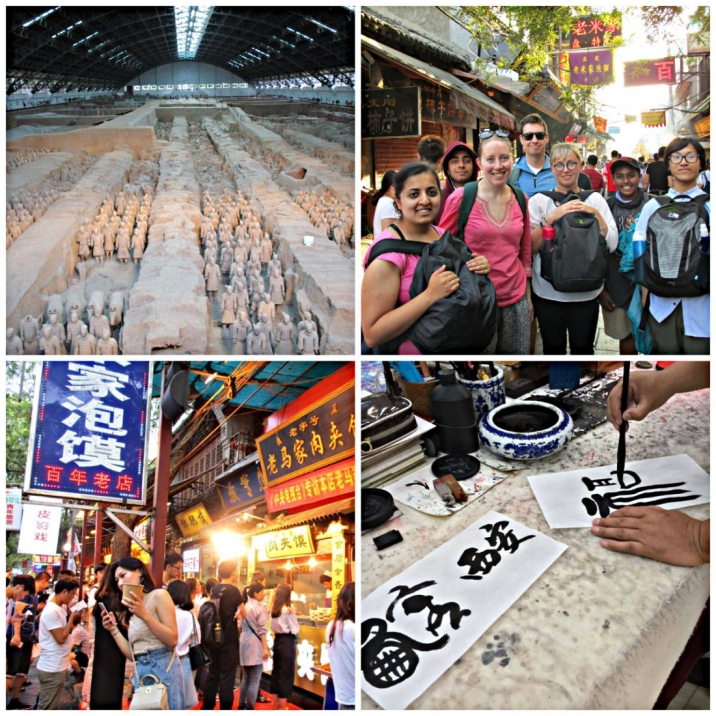
A Cookery Lesson and Meeting the Pandas in Chengdu
Arriving in Chengdu at 5am, we quickly made our way to an excellent hotel, certainly the students' favourite so far. Bleary eyed, we passed an interesting fish market, and learned that this area, which was very far from the sea, got most of it's catch from neighbouring Vietnam.
Another quick turnaround had us on our way to the Chengdu Research Base of Giant Panda Breeding. With the decreasing numbers of these incredible creatures bringing huge concern a few decades ago, the base was set up to help stimulate breeding amongst a species which is notoriously difficult to encourage reproduction in. The base started with only 6 pandas in 1987, but oversaw 124 births in 2008. It was incredible to spend time with such animals, still considered a vulnerable species. On a very hot day, they did little more than munch on some bamboo and relax in the trees.
A fantastic spicy lunch - we were now in Sichuan where the use of chillies and peppercorns is legendary - had us licking our lips in anticipation of our next activity, a cookery class, which was both great fun and also filling, eating the meal we'd just created. We were taught how to make our own dumplings, the fiery Kung Pao Chicken, and some vegetable chow mein. Though some students had never cooked before, everyone loved this culinary experience.
This would be our last taste of city life for a little while though. Next it was on to the mountains of Siguniang National Park and what promised to be the most challenging, and fulfilling part of the expedition.
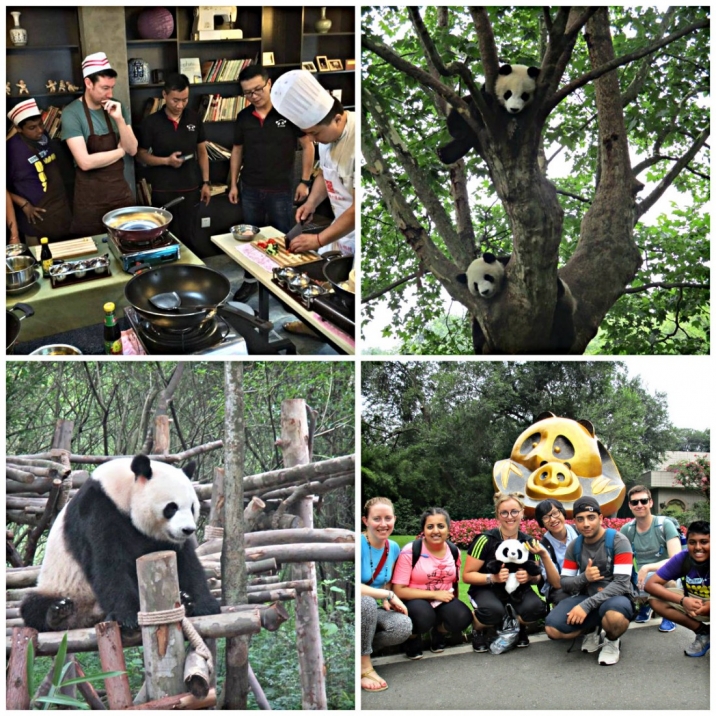
Climbing Mount Siguniang
Setting off from Chengdu to cover the 230 km, and 3,200m in height up to Rilong took a four hour journey by minibus, through some spectacular views and what seemed like endless tunnels, some almost 9km long. We came into our base for the next day, having began our course of medication to assist with acclimatisation to the high altitude we now found ourselves in. Resting was enough for the rest of the day, and being particularly careful not to over exert ourselves in this new environment.
The following morning, we set off on our trial walk, climbing up to almost 4,000m, with the help of our guide, a 75-year-old Tibetan, in great shape, who oversaw our progress. The higher we got, the more impressive the views became. At this point, a few of the group came to the realisation, either through anxiety or illness, that they could not attempt the full trek to summit the fourth sister of Mount Siguniang (standing at over 5,000m. Leaving them in the guesthouse, the truncated group set off in an attempt to climb above the clouds.
The opening leg of the trek finished at a wonderful camp situated between two lakes, at around 3,800m. Here, we enjoyed some tremendous home cooking which warmed us up on a cold night. When we awoke, we found that our the outside of our tents had frozen solid! It didn't take long for the sun to beam out however, and it accompanied us on the next leg, climbing to 4,400m to see the picturesque Rhinoceros lake. Our guide for the day, Mr Hoang, kept us entertained with jolly singing, interspersed with a few renditions of a unique Tibetan dance.
Day three featured a drastic rise in height from our first camp between the lakes, where we made base camp (4,700m) in preparation for an early summit the next morning. An early night was necessary here as we awoke the next morning at 3am, affixing head torches and adorning several layers as we set off after breakfast, aiming to climb the remaining 500 or so metres which would take us to the top. We climbed through cloud to the snow topped peak of the mountain, pausing several times to catch our breath as the oxygen grew thinner and thinner. A helpful wire chain fence guided us the final 100 metres up, and as the sun brilliantly reflected off the surrounding peaks, we had made it. With safety concerns meaning that we could only linger for 15 minutes at the summit, we then began a hazardous descent through snow and ice. Here, our guides were indispensable, helping ensure that our footing was secure.
A brief rest back at base camp allowed full comprehension of what we'd just achieved, before we set off back for Rilong, camping gear all packed and carried by the mules which accompanied our expedition. Having the option to come back down the mountain on horseback or walk, depending on how much energy we had left, we made our separate choices. As we came back into the village, there was a feeling of elation. Looking back at the mountain we had climbed, it sunk it further. This had been a huge challenge, and it felt so good to say that we had managed to do it. Truly unforgettable!
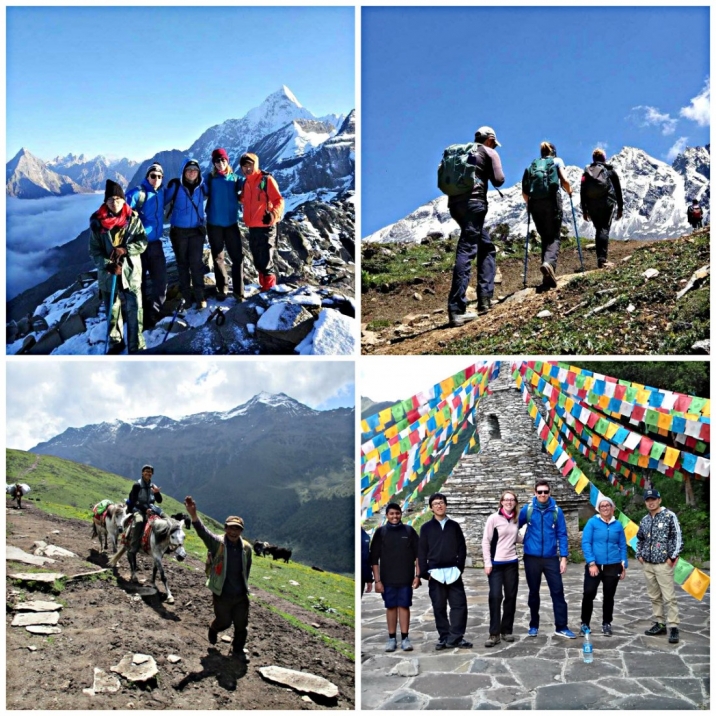
Project work with a local community in Danba, Sichuan Province
If the previous part of our journey had been about pushing ourselves physically, the next part would be about building strong links between our group and the local community. For the next five days, our base was to be Danba, farther west into Sichuan Province, where many Tibetan families lived.
We instantly felt at home, given a very warm welcome by Lamu and her family. Over the course of our stay, our mornings were spent assisting a local family work on their guesthouse, working hard to transfer earth to level out a raised floor in one of their rooms. We also helped Lamu's family clear ground and dig potatoes in their garden, and finished our manual labour tasks by harvesting a crop of Sichuan peppercorns.
Afternoons were taken up by providing a three sessions teaching English to a group of local children. We translated their names into shorter, more easily communicable English versions, and completed some fun and interactive lessons on how to introduce yourself in English, counting with numbers and being able to describe colours. The group provided some challenges as all of the children were of different levels, with ages ranging from 7 to 17. The College students coped admirably though and made an excellent contribution.
In the evening, we were fortunate enough to take part in two friendly games of basketball against local youngsters, and felt honoured when Lamu's family killed and barbecued a chicken to celebrate our stay. Departing back to Chengdu, we knew that we would miss people who we could now call friends.
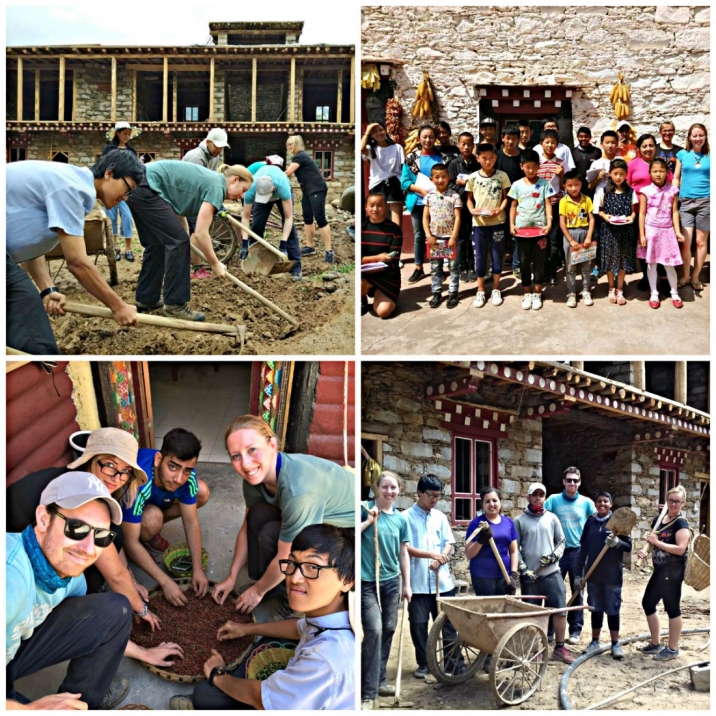
Cycling Yangshuo
Following our extended time in Sichuan, it was time to move on again. This time for a few days in the south, taking an internal flight from Chengdu to Guilin, and then transferring on to Yangshuo, a town famed for it's otherworldly Karst landscape.
Instantly, it was clear that Yangshuo featured far more of a tourist infrastructure, with more Western people visiting here, and hotels more equipped to cater to their needs. The other change was in climate. Yangshuo was far hotter and more humid than we'd experienced so far.
The highlight of our time in Yangshuo would be a cycle ride through the landscape skirting the side of the Li river. It was difficult to absorb the incredibly scenery as we passed through. Stopping to take a break, some students enjoyed testing their skills in archery, before cycling back to our guesthouse after lunch. We also managed to fit in an 800 step climb up Moon mountain, a strangely shaped rock with a hole in the middle.
The next evening, the group took a boat ride alongside a skilled raftsman who used his small flock of cormorants to help him fish the river with great success. These mesmerising birds were able to consume lots of fish themselves, but the fisherman was always able to interrupt their attempts to swallow the big ones!
Departing Guilin on another internal flight, our final destination would be Shanghai.
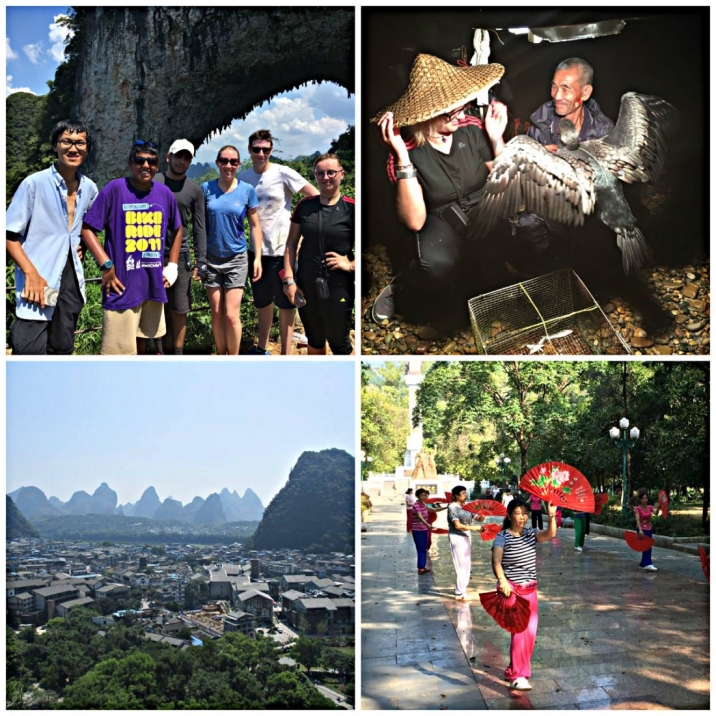
Last Stop Shanghai and Suzhou
Sadly, our Chinese expedition was drawing to an end, but at least it would be ending with a bang in Shanghai, a truly international city at the cutting edge of technological innovation. It is a city of 26 million people, which features the second tallest building in the world, the Shanghai Tower at 632m, and is the world's busiest container port.
Right away, we were thrust into the bustling city after arriving at the airport. Making our way to the 94th floor of the 8th tallest building in the world, we took in an incredible view of the city. Though smoggy and not completely clear, the skyline was awe-inspiring.
A quick trip to Suzhou followed this, visiting the scenic area at the Pan Gate, a beautiful, traditional garden which a tremendous pagoda. We then returned to Shanghai, walking round the museum of the city before heading out for our final meal - which was outstanding - and an exploration of the Bund area.
Though we had just enjoyed a 26-day expedition, it seemed to be over all too quickly! Bags were packed, and our coach driver took us back to the airport for our long flight home. Thoughts turned to the sights we had seen in this amazing country, the wonderful friends we'd made, the challenges we'd emerged from and seeing our loved ones again. An incredible adventure!
